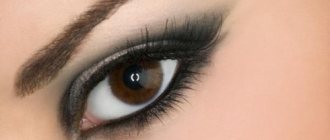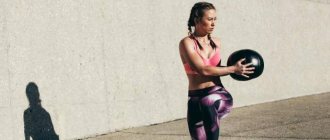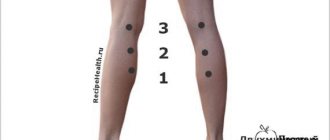Causes of cystitis
Cystitis is a purulent inflammation that affects the mucous membrane of the bladder. The main cause is a bacterial infection. According to statistics, every fifth woman has experienced cystitis at least once. Cystitis is extremely rare in men and children.
Why are women affected by this disease? The fact is that the urethra in women is much shorter and wider than in men, and through it the infection easily penetrates into the bladder.
If we examine the urine of a patient with cystitis, we will find in it:
- Streptococcus
- Staphylococcus
- Proteus
Bacteria can come from the intestines, and in 80% of cases it is E. coli that causes cystitis in women and children. They get into the bladder if basic hygiene rules are not followed or if they are not washed properly.
Much less commonly, cystitis is caused by gram-negative microorganisms that entered the bladder during medical intervention.
Often the cause of inflammation is sexually transmitted infections:
- Mushrooms of the genus Candida
- Trichomonas
- Chlamydia
- Mycoplases
If the latter were detected in the tests, then most likely cystitis will be accompanied by other gynecological diseases.
The infection can enter the bladder from the urethra and kidneys. Cystitis appears when the vaginal microflora is disrupted, inflammation of the vagina, inflammation of the cervix and urethra, thrush and any other diseases of the genital organs. Infection can get into the bladder with chronic kidney disease.
The last reason is related to sexual activity; cystitis can appear during loss of virginity or after violent sexual intercourse, when an injury to the urethra can occur.
The infection makes itself felt in cases of hypothermia, hypovitaminosis, decreased immunity, sedentary lifestyle, poor diet, overwork, improper hygiene, etc.
Before starting treatment, the doctor must determine the cause of cystitis, as if it is not eliminated, cystitis will appear again and again.
Symptoms
The course of cystitis goes through several stages. As you might guess, at the last stage the symptoms of the disease are the most severe and painful.
First, frequent urination occurs, the person goes to the toilet at least 7 times, and soon the urge to urinate appears almost every minute. Patients complain of discomfort during urination, burning, and gradually a constant nagging pain appears in the lower abdomen.
The further the disease progresses, the more difficult it becomes to hold urine. In such conditions it is impossible to work and live comfortably, because most of the time has to be spent near the toilet. This is how a kind of enuresis appears, when the patient cannot control the functioning of his bladder.
If no help was provided at this stage, then the next one occurs. In addition to frequent urination, it also causes pain and difficulty.
Patients compare their sensations to the feeling of broken glass passing through the urethra. Cystitis in men causes pain at the base of the penis when urinating.
With acute cystitis, lower back pain often occurs. Elderly people, on the contrary, suffer from urine retention in the bladder. At the same time, cystitis also affects the general condition of the body: body temperature rises, chills are felt and a feeling of nausea occurs.
The severity of the disease is indicated by the last, most dangerous symptom – blood in the urine. The urine gradually becomes darker, then acquires an ichorous tint. In this case, you should immediately consult a doctor, as this symptom indicates an unfavorable course of the disease.
If the patient has a chronic form of cystitis, then periods of exacerbation are accompanied by periods of rest. Symptoms during an exacerbation are similar to those listed above.
Cystitis can be sluggish, then there are no pronounced acute periods, but there is also no period of calm: the patient complains of constant pain and discomfort, periodic temperature fluctuations, etc.

What does the dietary nutrition system look like in the acute form of the disease?
If there are food products that can significantly harm the patient, then there is also a category that has a beneficial effect on the course of the disease, promoting a speedy recovery.
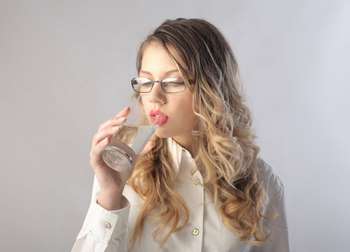
In case of acute cystitis, the dietary system for both adults and children has a gentle menu: vegetables, fruits, dairy products. Thanks to this diet, the body will fight the existing bacteria much faster and more effectively, which provoked the occurrence of this disease. In addition, a therapeutic dietary diet helps restore and activate the full functioning of not only the affected organs, but also all other systems of the digestive tract.
Water balance plays an important role in dietary therapy. A person who has cystitis should drink plenty of water daily. As a rule, the daily norm is at least one and a half liters, not taking into account broths and first courses. This will help to quickly cleanse “sick” organs of harmful microbes and infections.
And, of course, folk remedies, where would we be without them? Cranberry juice performs well due to the fact that it contains substances that destroy pathogenic microbes. But to feel the effectiveness of this folk remedy, you need to drink at least one liter of cranberry juice every day.
Honey of all varieties is also welcome, as it relieves inflammation well.
Tests for cystitis
In order to determine the presence of cystitis, a minimum of effort is required from both the patient and the doctor. It is a little more difficult to identify cystitis in the chronic form and at the very beginning of the disease, but if the symptoms are at their “heightest”, then everything is much simpler.
First, the doctor collects an anamnesis, finds out the medical history with all the details and sends the patient for a laboratory examination.
To establish a diagnosis you will need:
- General urine analysis
- General blood analysis
- Additional urine analysis according to Nechiporenko
In most cases, diagnosis is limited to visiting a gynecologist and taking a general blood and urine test.
To find out additional information you may need:
- PCR diagnostics (for detection of infectious diseases)
- Ultrasound of the genitourinary organs
- Bacteriological culture of urine to check microflora
- Biopsy
- Cystoscopy
- Analysis of vaginal microflora
A general urine test, as a rule, should show the presence of red blood cells, white blood cells, protein, epithelial cells, and a large number of bacteria.
The color of urine is cloudy for everyone. To get a more comprehensive picture, a urine test according to Nechiporenko is prescribed. With its help, you can determine the exact number of cylinders, red blood cells and leukocytes in 1 ml of urine.
The most important thing is for the patient to comply with certain requirements before taking the test. Before collecting urine, you need to perform genital hygiene. First, a small amount of urine is flushed down the toilet, and the rest is filled into a jar. If a woman is taking the test, you need to hold your labia when urinating.
Other tests may be required to determine the specific causative agent of the disease and check the health of other organs.
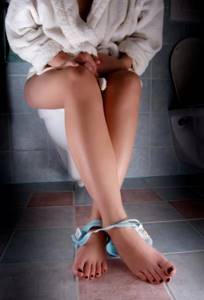
Features of children's nutrition
Cystitis is detected quite often in children, and gender does not play a particular role in this issue.
The diet of pediatric patients includes the following products:
- Whole grain porridge;
- Fruits, vegetables (citruses are prohibited);
- Fermented milk products like fermented baked milk, kefir or yogurt, only with a minimum sugar content;
- Fruit drinks and decoctions that have a diuretic effect;
- Lean meat and lean fish.
At the same time, it is strictly forbidden for children with cystitis to eat sweets and fried foods, spices and other unhealthy foods.
With proper adherence to the dietary diet, patients can quickly reduce intoxication, increase the therapeutic effect of medications taken, and also speed up the recovery of the mucous membranes of the bladder. In the video about proper nutrition for cystitis:
Treatment methods
Any treatment is primarily aimed at eliminating the cause. In the case of cystitis, this is microbial inflammation.
The doctor prescribes:
- antibiotics
- anti-inflammatory drugs
- means to improve immunity
Treatment of cystitis does not require hospitalization, but is carried out at home. The mucous membrane of the bladder responds well to medications and recovers quickly. The main thing is to start treatment on time and not bring the disease to a chronic form.
To relieve the main symptoms in the form of pain and burning, antispasmodic drugs are prescribed. You can place a heating pad on your stomach or take a warm sitz bath.
But there is one caveat: these procedures are strictly prohibited for patients at a severe stage of the disease with blood in the urine. This can only worsen the course of the disease and increase bleeding.
Taking antibiotics is mandatory. Most often, Monural or fluoroquinols are prescribed. The first is taken only once, the second - for three days.
Until the pain disappears, it is advisable to remain in bed. An important factor in treatment is diet. It is necessary to exclude sour, fatty and fried foods, alcohol and coffee, that is, those foods that irritate the mucous membrane of the bladder and, therefore, aggravate the symptoms.
In the chronic form of the disease, much attention is paid to eliminating the underlying disease that provokes cystitis.
You can also go through:
- iontophoresis
- inductothermy
- UHF
- other physiotherapeutic procedures
In addition, taking decoctions and infusions of herbs will be useful. The most useful are chamomile, bearberry, calamus, and horsetail. There are many tablets that consist of natural ingredients.
To get rid of cystitis in a short time and forget about it forever, you need to follow all the doctor’s recommendations and use complex treatment therapy.

Treatment of cystitis with folk remedies
Read also Myocardial infarction - causes, symptoms, first aid and treatment
Many, many people have been helped by folk remedies in the treatment of cystitis. Let's look at some of them.
Warming up
Before warming up, it will be good if you steam your legs, and then, after wrapping yourself up, apply a heating pad to the bladder area.
Salt. Heat table salt in a frying pan and pour into a sock. Apply it like a heating pad to your lower abdomen and crawl under the blanket.
Buckwheat, millet, rice. Do the same as with salt.
Water bottle. Fill a plastic bottle with hot water, apply it to your lower abdomen and wrap yourself up.
The warming process should be pleasant, so if the heating pad is very hot, place a cloth under it.
Baths
With sea salt. Fill the bath with water and add sea salt.
With essential oils. Add 2 drops each of eucalyptus, sandalwood and juniper oils to the bath water and sit for 10 minutes.
Juniper essential oil is contraindicated during pregnancy.
With chamomile. Brew 3-4 tbsp in boiling water. spoons of chamomile and pour into a bowl, stirring with warm water. Sit in this bath until it cools down, but remember that the water should not be too hot. You can make the same bath with calendula or add calendula to chamomile.
With iodine. Fill a bowl of hot water and pour in some iodine. Sit over the bath for 10-15 minutes.
With milk. Heat the milk to such a state that you can sit in it, take it until it cools down.
Decoctions
Chamomile. Pour 1 tbsp. spoon of chamomile 1 glass of boiling water. Take 20 ml 3 times a day.
Read also Mononucleosis - symptoms and treatment
St. John's wort. 1 tbsp. Pour 1 cup of boiling water over a spoonful of St. John's wort. Boil for 10-15 minutes and strain. Take 50 ml 3 times a day.
Sage. 1 tbsp. Pour a spoonful of medicinal sage into 1 cup of boiling water and boil for 30 minutes in a water bath. Cool and add hot water if necessary until you get 1 cup of liquid. Take 50 ml 3 times a day 30 minutes before meals.
Lingonberry leaves. Pour 1 cup of boiling water over 2 teaspoons of lingonberry leaves and boil for 10-15 minutes. Let the broth steep for at least 2 hours. Strain and take 100 ml 4 times a day before meals.
Yarrow. Brew 2 teaspoons of yarrow with 1 cup of boiling water. Let stand for 1 hour and strain. Take a quarter glass 4 times a day.
Diet for cystitis
Diet for cystitis is a prerequisite for recovery. Depending on the form of the disease (acute or chronic), the diet will be slightly different.
In case of acute cystitis, you need to drink as much fluid as possible, more than 2 liters per day. This can be mineral water, juices and fruit drinks, compotes, weak tea. It is good to drink herbal infusions, such as kidney tea, bearberry, corn silk or any other favorite herbs.
A diet for cystitis involves eating large amounts of vegetables and fruits. Cystitis is most “afraid” of melon and watermelon, as they have the most powerful diuretic properties. This also includes zucchini.
When the pain begins to subside, you can consume dairy products, namely cottage cheese, unsalted cheese and lactic acid products. You can eat a little fish and meat.
You should avoid coffee, alcoholic drinks, strong drinks, any carbonated drinks, foods with dyes and preservatives, spicy, smoked, salty and sour foods.
If cystitis is chronic, then you need to follow a diet not only during exacerbations, but also during periods of remission. To reduce bladder swelling and eliminate the risk of ulcers, eat diuretic and antimicrobial foods. That is, you need to eat as many fruits as possible (pears, watermelons, melons, pumpkins, grapes) and drink more liquids and herbal infusions.
You need to give up spices, broths, fried foods, limbs, and canned foods. You should not add sour berries and fruits, green salad, sorrel, cabbage, radishes, horseradish and garlic to your food.
It is also necessary to normalize the functioning of the gastrointestinal tract. If a person suffers from constipation, this contributes to the accumulation of toxic substances in the intestines, which also affects the bladder.
Therefore, to normalize stool, it is recommended to take pasta, cereals, cabbage, and carrots. You should consume as much fiber as possible, which enhances intestinal motility, including cereals and pasta.

Authorized Products
Soups are prepared with vegetable broth. Cabbage soup made from sour cabbage, vegetable and cereal soups are allowed. They are seasoned with sour cream or butter, but any seasonings and herbs are excluded.
Main courses are prepared from lean meat (usually chicken, beef). It needs to be boiled, stewed with a little water or baked. Stuffed cabbage rolls (but without tomato sauce), stuffed zucchini, and boiled meat casseroles with vegetables and pasta are allowed. Low-fat fish is boiled or baked in milk or sour cream sauce. You can use all cereals and any pasta as a side dish. Porridge is cooked in water, you can eat krupeniki (casseroles) with cottage cheese, fruit pilaf. Among dairy products, milk, yogurt, and low-sour cottage cheese are allowed. Allowed 1 boiled egg per day. Many vegetables are allowed; they can be boiled, stewed, or made into vegetable cutlets in the oven. You cannot add spices to stewed vegetables (you can use sour cream or cream).
Ripe sweet fruits and berries, purees and jelly made from them, jellies and compotes without sugar are allowed. Honey is allowed, and for drinks - rosehip decoction, juices from sweet fruits, weak coffee and green tea, decoctions of cranberries, lingonberries, fruit drinks from these berries.
Are you sure that you have “uncomplicated” bacterial and cystitis in general?
Pain in the genital area, frequent urge to urinate (up to several times an hour), a feeling of fullness when the bladder is empty, sometimes pain in the lower abdomen and blood in the urine - this is not a complete list of symptoms of cystitis that can ruin life instantly and at the most inopportune moment. Cystitis can be acute and chronic, and the latter can include both frequent (3 or more times a year) acute relapses and constant, practically non-disappearing symptoms.
Why does cystitis occur?
Inflammation of the bladder can be caused by infections and infestations (bacteria, viruses, fungi, protozoa and... even worms), stones and foreign bodies, general endocrine diseases and menopause, physical and chemical factors, cancer and even some medications. In addition, there is also the so-called interstitial cystitis, the causes of which are still debated by scientists.
Cystitis has a woman's face. This characterization of bladder disease sounds comical, but, nevertheless, women suffer from cystitis 8-10 times more often than men. It is easier for bacteria to overcome the 4-5 cm wide female urethra than the 18-23 cm narrow male urethra. And there are much more potential colonizers themselves due to the fact that the exit of the urethra, vagina and anus in women are very close. Therefore, men suffer from cystitis much less frequently, mainly in old age and, in most cases, it is secondary to chronic prostatitis, adenoma, STDs and other diseases.
Where to go with signs of cystitis?
Even a general practitioner (family doctor) can treat uncomplicated bacterial cystitis. But ideally, cystitis should be dealt with by a urologist, and for women, in conjunction with a gynecologist. In practice, this is rare, and urologists more often treat men and cystitis associated with problems of the bladder and kidneys themselves, and gynecologists get the rest.
In this case, a minimum of research: urine tests, smears from the vagina and urethra, should be prescribed by any specialist. It is useful to be examined for STIs by a venereologist, even if there is “nothing like that,” but in case of recurrent cystitis, this must be done. Well, what exactly is needed in each case depends on the course and severity of the disease: this could be additional culture, consultation with a nephrologist, ultrasound and x-ray to exclude kidney pathology, cystoscopy to examine the condition of the bladder walls, etc.
There is no panacea
As soon as it is invented, the medical profession will disappear, but for now the main question that the patient needs to decide is who will treat him. But “how” is determined by the doctor and no one else.
The insidiousness of cystitis is not that it is difficult to treat: primary uncomplicated bacterial cystitis responds well to antimicrobial therapy. But it is precisely because of this apparent simplicity and the rapid disappearance of unpleasant symptoms that millions of women annually join the ranks of the chronically ill. Why? The answer is self-medication and neglect of normal therapy.
Medicines for cystitis are advertised on TV and radio under the motto “drink one sachet, take one tablet, and you’re healthy.” Sympathizers willingly share 101 grandmother’s recipes and say that in 1900, this and that helped them, and only Only a few conscientious advisers urge you to see a doctor.
Indeed, the course of treatment may be super short. And in the protocols for the treatment of acute uncomplicated cystitis there are options with a single use of an antibiotic. And even a doctor, having decided on the causes and manifestations of the disease, can prescribe the very advertised remedy. But, firstly, in all decent countries they are sold only by prescription and no more than a certain number of daily doses, and, secondly, who told you that cystitis is a reason not to go to the doctor?
Why? Are you sure that you have “uncomplicated” bacterial and cystitis in general? A normal doctor will name two dozen similar symptom complexes, including viral cystitis, tuberculous cystitis, urethral infections, a malignant process and another half page of possible diagnoses.
So if you miss, then at best, self-medication will not help and will not relieve harmful symptoms. It's worse when they disappear for a while, but the disease continues to progress. And a bladder infection that is not fully cured can become chronic or recurrent, spreading to the kidneys and neighboring organs, leading to irreversible changes in the bladder and two to three dozen other diseases.
Therefore, excuse me, but we will not tell you how to treat cystitis. At all. Because this would be a medical crime, especially since this question is usually asked by those who simply do not want to go to the doctor.
About cystitis and Martians
Yes, there is such a fashion to be interested in treatment options in case “when you can’t get to the doctor.” So, what to do if a patient in the jungle, on a distant spaceship or in a Martian mine is mining rubidium?
For an acute case outside the home, there is advice: if you notice signs of cystitis on the road, at a resort or in the mountains, and this happened for the first time, then you need to quickly get to a doctor - there are still wild Aesculapian animals somewhere nearby. And on the way, don’t get too cold, drink plenty of fluids, don’t eat spicy, salty or sour foods, and forget about alcohol.
If you have a chronic problem , then before you set off to conquer unknown worlds, you should consult your regular doctor about what medications to take with you, how and in what case to take them, and also ask about the means of communication with this very doctor who saw you personally and observed.
But what you don’t need to do is take advertised antibiotics and use regimens that have helped someone. It’s not a fact that your cystitis is of the same nature, and such advice is often given in the form of “and in such cases I always…”. If the treatment is so successful, then where do the relapses come from? Frequently recurring cystitis is not an isolated problem, but a bell signaling systemic problems in the body and lifestyle.
And forget, for the sake of God and your own health, the most popular Internet advice: “keep a bottle of hot water between your legs.” This will make it easier, but the infection can also spread upward and wider, not to mention the fact that you could have made a mistake with the diagnosis.
8 Risk Factors for Cystitis
1. General decrease in immunity and the presence of chronic diseases (stress, nephrological and gynecological problems, sexually transmitted infections, pregnancy, reduced immune response before menstruation, etc.).
2. Hypothermia. Particularly dangerous are the targeted ones: pelvis, lower back, legs.
3. Changes in the mucous membranes of the vagina and urethra. Estrogen deficiency, frequent use of spermicides and inappropriate contraception, inflammation in the pelvic organs, tendency to constipation, kidney disease, etc. lead to bladder tissue becoming more loose and susceptible to infection.
4. Problems with hygiene. Pads and tampons (they are, however, generally not in honor among doctors) need to be changed as often as possible. It is recommended for ladies to dry themselves and wash themselves strictly in one direction - from front to back, because the most common causative agent of cystitis is Escherichia coli (Escherichia coli). For the same reason, you should not alternate between anal and vaginal sex. Moreover, Escherichia coli has excellent adaptability and strains with “improved tenacity” towards the uroepithelium.
5. Non-physiological clothing. Thong panties for E. coli are not a luxury, but a means of speedy and sure movement to the urethra. Fans of tight jeans, synthetic underwear and mini underwear in any weather are also at greater risk than others.
6. Spicy food and alcohol. After spicy food, especially those flavored with alcohol, substances are released in the urine that irritate the walls of the bladder, that is, opening gaps for infection.
7. Features of anatomy and rough sex. Recurrences of cystitis can be facilitated by abnormalities in the location of the urethra: if it opens into the vagina or is located too close to it, then sex is fraught with the throwing of foreign flora where it should not.
Cystitis can also be a consequence of a sex marathon (after which the opening of the urethra is very irritated), love for a “full bladder,” defloration, or a change of partner, when new flora enters the vagina. Doctors even have unofficial names “defloration cystitis” or “honeymoon cystitis”.
8. Problems with the toilet. Constant overflow of the bladder leads to its stretching and loss of elasticity, but constant visits to the toilet with a small amount of urine (for example, due to stress) can weaken the protective mechanism of the mucous membrane. The normal frequency of urination for women is once every 3-5 hours.
Novinsky Boulevard, 25, building 1 Moscow, Russia, 123242
The structural features of the urinary system lead to the fact that cystitis occurs more often in girls over 4-5 years of age than in boys of the same age. Knowing the symptoms that appear during bladder inflammation will help parents pay attention to the child’s condition in time and avoid the development of complications.
Forms of the disease in girls
In a child, cystitis can occur in a chronic or acute form. Childhood cystitis can be triggered by hypothermia, disturbances in the functioning of the immune system (with influenza or ARVI), and a lack of vitamins, especially A and C.
Have you been fighting CYSTITIS for many years without success?
Head of the Institute: “You will be amazed at how easy it is to cure cystitis by taking it every day.
The acute form is characterized by the severity of symptoms and begins suddenly. Signs of the disease appear when exposed to a provoking factor and develop over several hours.
The chronic form of the disease occurs in 2 stages: subsidence of the process (remission) and exacerbation of the disease (relapse). Symptoms of cystitis may be erased.
Depending on the tissues involved in the process, cystitis is divided into:
- catarrhal, associated with damage to the mucosa and submucosal layer;
- granular cystitis, in which the surface of the mucous membrane becomes covered with rashes, can be caused by herpes viruses;
- bullous, causing swelling of the mucous membrane;
- with encrusting cystitis, the mucous membrane is damaged by crystals of uric acid, oxalates, etc.;
- interstitial occurs with systemic lesions of the body;
- polypous cystitis is characterized by proliferation of the mucous membrane and the formation of polyps;
- with phlegmonous, purulent foci appear;
- severe forms are gangrenous and necrotizing cystitis - with them, necrosis and decay of the muscle tissue of the bladder begins.
Causes
At a younger age (in a newborn or one-year-old girl), a common cause of infection in the vaginal area and bladder is a dirty diaper that was not changed in time. In children under 1 year of age, cystitis is caused by E. coli: bacteria from the intestines easily penetrate the urethra, located next to the anus.
In children over 1 year of age, the causes of the disease and pathogens are as follows:
- at 2 years old, the child becomes more active and can become hypothermic in winter, play in unsterile conditions, and swim in summer;
- at 3 years of age, innate immunity to infections practically disappears;
- at 4 years old the child tries to be independent and begins to take care of himself. A common cause is insufficient proper washing, which causes the introduction of E. coli from the anus;
- upon reaching 6 years of age, a child can become infected with chlamydia, mycoplasmosis or bacterial infections when visiting baths and swimming pools. In these same places there is a high risk of getting a fungal infection;
- at the age of 9, cystitis provokes independent and incorrect hygiene procedures, and in the period of 11-14 years - the beginning of hormonal changes and the appearance of the first menstruation;
- By the age of 15, girls begin to gain experience in sexual relations. Staphylococcal infections and STDs are added to the causes of diseases of the genitourinary system.
The routes of infection for primary cystitis can be different:
- ascending (from the urethra into the body);
- descending - from diseased kidneys to the bladder;
- lymphogenous, when pathogens are located in the pelvic organs;
- hematogenous, in which bacteria are spread by blood from a distant source of inflammation.
In a healthy girl, pathogens that have penetrated the urinary canal are washed away with urine. The functions of the urinary system can be disrupted and cystitis can be provoked by:
- incomplete emptying of the bladder;
- pathology of the walls of the bladder and urethra;
- kidney disease;
- foci of chronic infection;
- taking sulfonamides, cytostatics, methenamine and other drugs;
- endocrine dysfunction.
Signs of cystitis
An infant or one-year-old child may not be able to communicate problems or pain. In little girls, any infection is manifested by symptoms of intoxication:
Our readers successfully use CystoBlock to treat cystitis. Seeing how popular this product is, we decided to bring it to your attention. Read more here...
- temperature rise to + 39ºС;
- increased moodiness;
- refusal of food;
- discoloration, strong smell of urine.
When the child can already tell where it hurts, complaints of pain in the lower abdomen or genitals appear. A girl may refuse to go to the potty. If the child has already learned to go to the toilet on time, then urinary incontinence during the day may be a signal of the onset of inflammation.
After 7 years of age, symptoms begin with frequent urges to urinate, and the child visits the toilet every 15-30 minutes. When questioned, a 9-10 year old girl may report that she is in pain. The most common complaints are itching in the genitals and anus. The temperature rises slightly.
It is difficult to determine cystitis in a teenager, because at this age girls become secretive, and only with a trusting relationship with their parents can they report such an intimate problem as:
- pain when urinating;
- lower abdominal pain;
- possible change in urine color.
If there is a sexual relationship, a girl may be frightened by the symptoms, confusing them with manifestations of an STD or pregnancy.
Diagnostics
When visiting a clinic, the patient’s characteristic complaints, as well as laboratory tests, help diagnose cystitis:
- A general analysis of urine and blood makes it possible to judge the presence of inflammation;
- bacterial culture of urine identifies the pathogen;
- biochemical analysis determines the presence of protein and salts in the urine.
For final conclusions about the patient's condition, an ultrasound of the bladder and kidneys may be required. For granular cystitis, ELISA is prescribed to determine the virus.
Treatment
Therapy for cystitis in girls consists of a combination of drug treatment, a special regimen and diet, and the use of folk recipes. Cystitis in a child cannot be treated independently. Any medicine must be prescribed by a doctor, because... not all drugs are suitable for children. Most antibiotics can only be taken after 12 years of age. The dose and course of administration are prescribed individually, depending on the condition and age of the girl.
Drug therapy
Bacterial forms of cystitis are treated with penicillin antibiotics (Amoxicillin, Ampicillin, etc.) But many bacteria are resistant to penicillins, so the drugs Augmentin or Amoxiclav, which have a more complex composition, are most often used. They are prescribed to children over 1 year of age. Acute cystitis is treated with Monural, which prevents bacteria from attaching to the mucous membrane. It can be used in children under 1 year of age and older as prescribed by a doctor.
If you are intolerant to antibiotics, cystitis can be treated with macrolides (Azithromycin) and cephalosporins (Cefuroxime and drugs containing it).
To relieve pain and reduce temperature, the pediatrician will select analgesics and antipyretics (tablets, suppositories, etc.). Intoxication due to cystitis requires compliance with the drinking regime. Daily fluid intake should exceed the average age norm by 50%. This amount includes water, fruit drinks, compotes and herbal decoctions.
Medicinal mineral waters (Slavyanovskaya, Smirnovskaya, etc. with a mineralization of at least 2 g/l) are prescribed separately. They are taken 3 times a day before meals. The volume of liquid should be 3-5 ml for every 1 kg of the child’s weight (up to 8 years, no more than 100 ml).
Folk remedies
Herbal medicine at home involves the use of medicinal herbs. For a child, it is better to purchase ready-made pharmaceutical preparations with yarrow, chamomile, nettle, etc.
A common folk remedy for the treatment of childhood cystitis is chamomile or yarrow poultices. To do this, the herb steamed with a small amount of hot water is wrapped in gauze and applied to the bladder area. The poultice should be pleasantly warm, but not burn the skin. Keep until cool.
Sitz baths made from herbal decoctions have a warming and bactericidal effect. A decoction can be prepared from ready-made teas for cystitis or you can use oregano, birch leaf, and chamomile. Herbs are taken at the rate of 2 tbsp. l. per 1 liter of hot water, pour and cool to an acceptable temperature. Take a bath for 10 minutes 1-2 times a day.
Prevention
You can prevent cystitis by observing the hygiene of the genital organs of girls at a young age. For children over 1 year of age, preventive measures should include hardening and timely treatment of other infections. Vitamin therapy can increase the body's defenses.
How to choose a medicine?
In the case of cystitis, as with most diseases, it is better not to self-medicate. After all, the symptoms may be similar to other diseases, and then, instead of curing the disease, a person can only harm the body by taking the wrong medications.
Moreover, based on symptoms alone, it is impossible to identify the cause of the disease, and, consequently, to prescribe effective medications.
However, it is better to become familiar with the effects of certain medications. So, as for antibiotics, they are prescribed only in the case of microorganisms entering the bladder.
The most effective antibiotics:
- Monural
- Nolitsin
- Palin
- Nevigramon
- Rulid
Monural can be taken even without waiting for urine tests. It is effective in eliminating bacteria; the main active ingredient is phosphoric acid and uroantiseptic.
The active ingredient of Nolitsin is norfloxacin. Its analogues are Norbactin and Normax. Ciprofloxacin and Ofloxacin have a similar effect. Only doctors prescribe these antibiotics.
Palin is an antimicrobial drug, belongs to the quinolones, and is effective against bacterial cystitis. Nevigramon eliminates bladder inflammation thanks to its nalidixic acid content. Rulid is prescribed only by a doctor; it belongs to polysynthetic antibiotics and belongs to the group of macrolides.
Often, the doctor prescribes Ciprofloxacin, Nitrofurantoin and Furadonin. These medications also fight bacteria and are suitable for both women and men.
As an additional remedy, herbal remedies are used that help eliminate inflammation of the bladder, but do not fight bacteria. If taken according to the regimen, herbal medicines are absolutely harmless. They have anti-inflammatory, analgesic and antiseptic effects.
To alleviate the severity of symptoms, you need to choose a collection or tablets containing goldenrod, lingonberry, St. John's wort, cranberry, licorice root and barberry. The most popular tablets are Phytolysin, Canephron, Cyston.
To choose a medicine, it is enough to know the nature of the disease. Most often, antibiotics and herbal medicines are used in combination.



